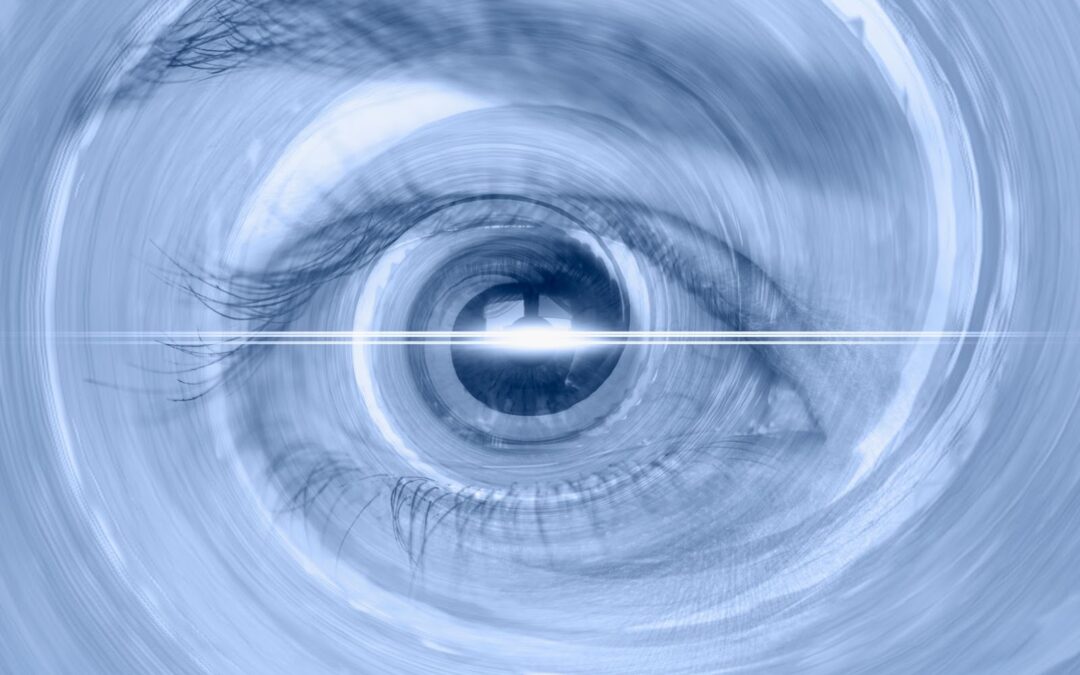Perhaps you’ve experienced floaters, flashes or ocular migraines but weren’t sure of why they occur or if you should be concerned. This post provides an overview, but please contact us if you’re concerned about any of your symptoms!
Floaters
Floaters can be attributed to aging vitreous. The vitreous is a clear gel that fills the space between the crystalline lens and your retina. As you age, the vitreous begins to thin and sometimes separates from the back of the eye. This is called posterior vitreous detachment (PVD). As bits of the vitreous gel separate, they may cast shadows on the retina. These shadows are referred to as floaters. Floaters are very common and rarely cause any serious problems.
However, sometimes floaters can be the result of a more serious condition. Floaters may result from retinal tears or detachment, or from an eye disease. Floaters may also present a more serious problem if they are associated with migraine headaches. Read more about what can be done about floaters in this post.
Symptoms of Floaters
Floaters may present themselves in various forms or shapes. These include:
- Black spots
- Spider webs
- Flashing lights or colors
- Obstructed vision
Flashes
Flashes occur when the vitreous gel bumps, rubs or tugs against the retina causing an electrical impulse to the brain. They also can be caused by a blow to the head. The result is flashes of light that streak across your field of vision. Flashes can occur with floaters and are more noticeable in dark environments.
When flashes appear like “heat waves” or jagged lines, they may be caused by a migraine (blood vessel spasms in the brain). They may last 10-20 minutes and may lead to a migraine headache.
Floaters and flashes are generally considered harmless. However, if floaters or flashes are accompanied by other symptoms, they may be a sign of a more serious problem. If you are noticing floaters or flashes in your line of vision, contact us today for an appointment.
Ocular Migraines
An ocular migraine can cause vision loss or blindness in one eye for a short time (less than an hour). Sometimes this occurs before or during a migraine headache, according to WebMD. Ocular migraines are rare, but some research suggests the symptoms are due to other problems in many cases.
Some migraines have other vision problems, called aura, which can involve flashing lights and blind spots. These symptoms typically occur in both eyes.
If you’re experiencing an ocular migraine, the visual impairment typically lasts about an hour and it’s best to rest your eyes until your vision returns to normal.
For more information on eye conditions, visit https://www.kellogg.umich.edu/patientcare/conditions/index.html
Call us today at 303-772-3300 to schedule an appointment to diagnose floaters or flashes in any of our Boulder, Longmont, Lafayette and Greeley offices.

